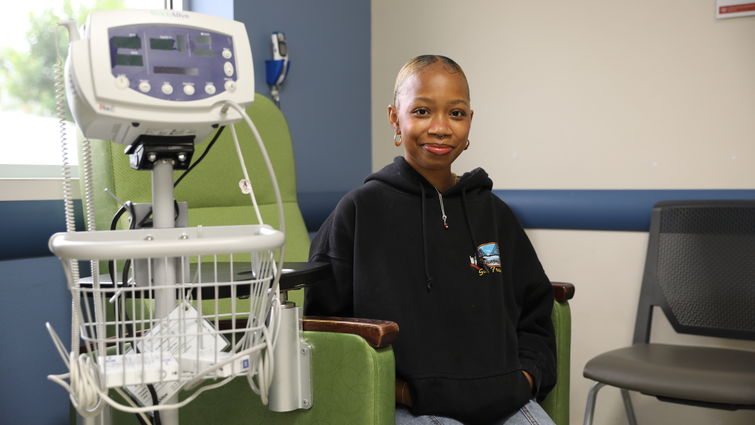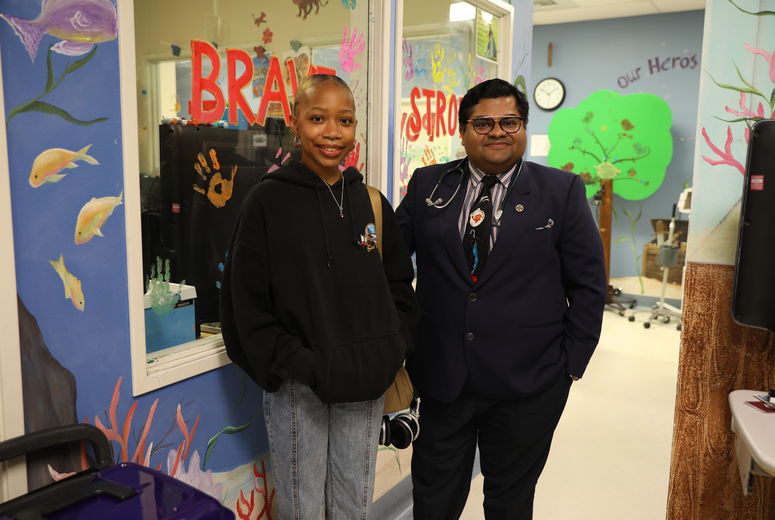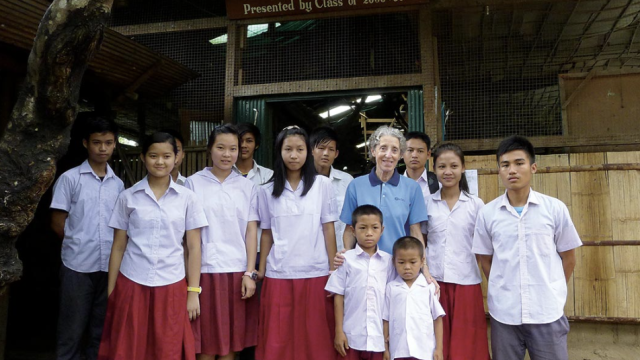A patient at Loma Linda University Health and her doctor share her story.

Genesis Williamson’s introduction to sickle cell disease happened at just three weeks old, when a newborn screening brought her diagnosis to light. From that moment, the condition has shaped every aspect of her life, and it has been far from easy.
Sickle cell disease is the world’s most common inherited disease, with more than 300,000 babies born with this disease every year worldwide. It is a group of genetic disorders that distort red blood cells into a crescent moon shape, blocking blood flow and depriving organs of vital oxygen, according to the U.S. Centers for Disease Control and Prevention.
Williamson, now 24, reflects on her unique challenges growing up.
“I didn’t have a lot of normal childhood experiences like others,” she said.
Physically demanding sports and activities were often off-limits due to the ever-present risk of periodic episodes of extreme pain, a hallmark symptom of the disease.
Over the years, she has received treatments and medications at Loma Linda University Health’s comprehensive sickle cell clinic, a program with a multidisciplinary team, research initiatives, and clinical trials to advance the science of hematologic disorders.
At one point, she underwent exchange transfusions to remove abnormal sickle red blood cells and replace them with normal red blood cells to reduce the frequency of painful crises and strokes. However, her journey took a significant turn when she participated in a gene therapy study in Boston, hoping to cure her sickle cell disease.
In 2019, Williamson underwent gene therapy, an experimental treatment aimed at editing her genes to promote the production of fetal hemoglobin, which doesn’t sickle like the adult form. What was going to be an attempt at a cure turned out to be the first failure of gene therapy for sickle cell disease in a 19-year-old female with severe sickle cell disease. After receiving high-dose chemotherapy in preparation for the gene therapy, she was left with complications and uncertainty.

Stabilizing the Disease
Returning to Loma Linda, Williamson’s medical team, led by Akshat Jain, a lifespan hematologist, faced the daunting challenge of stabilizing her condition. The chemotherapy required by the gene therapy posed a high risk due to her immune-compromised state, and she was anemic.
“Hemoglobin level tells you how bad your anemia is, so first and foremost we needed to help her get her hemoglobin up,” Jain recalled. “When her levels are stabilized, it reduces the risk of pain crises and hospitalization. She can sleep better, be more efficient, and perform better in school.”
Jain also leads the Pediatric Sickle Cell Center at Loma Linda Children’s Hospital and emphasizes the importance of comprehensive care, which includes mental health support, physiotherapy, dietary counseling, dental care, and nursing services. These efforts aim to alleviate pain, stabilize hemoglobin levels, and enhance overall quality of life.
Williamson’s story is just one part of Jain’s mission to raise awareness about sickle cell disease. Genetic counseling and education help individuals understand their risk of carrying the sickle cell trait, helping them make informed family planning decisions.
Sickle cell disease is a lifelong illness affecting more than 100,000 people in the United States and 20 million worldwide, primarily those of African ancestry, according to the American Red Cross. While blood transfusion remains a primary treatment, ethnically matched blood offers the best results for sickle cell patients. Currently, a bone marrow transplant is the only cure for the disease.
Jain’s vision is to create a lifespan care model, providing specialized care from childhood through adulthood with a consistent health-care team.
“Our first stem cell transplant was in 2019, and since then, we’ve successfully cured more than two dozen children with sickle cell disease,” Jain said.
Williamson manages sickle cell disease with daily medication and monthly intravenous medications and remains optimistic about the future of sickle cell care. She believes that increased research and attention to the disease will lead to better treatments and enhanced quality of life for those living with sickle cell.
“I feel like there’s a lot more focus on care for patients with sickle cell disease. People are looking at sickle cell under a microscope now and trying to find better medications for us,” Williamson said.
Beyond her medical journey, she still has found courage to help others suffering from sickle cell disease by finding meaningful work at a local Sickle Cell Disease Foundation, clinic officers revealed. “She has contributed to the sickle cell community while pursuing her passion for art and playing the bass guitar,” they shared. “Her journey exemplifies the daily strength and resilience of those battling sickle cell disease.”
The original version of this story was posted on the Loma Linda University Health news site.








